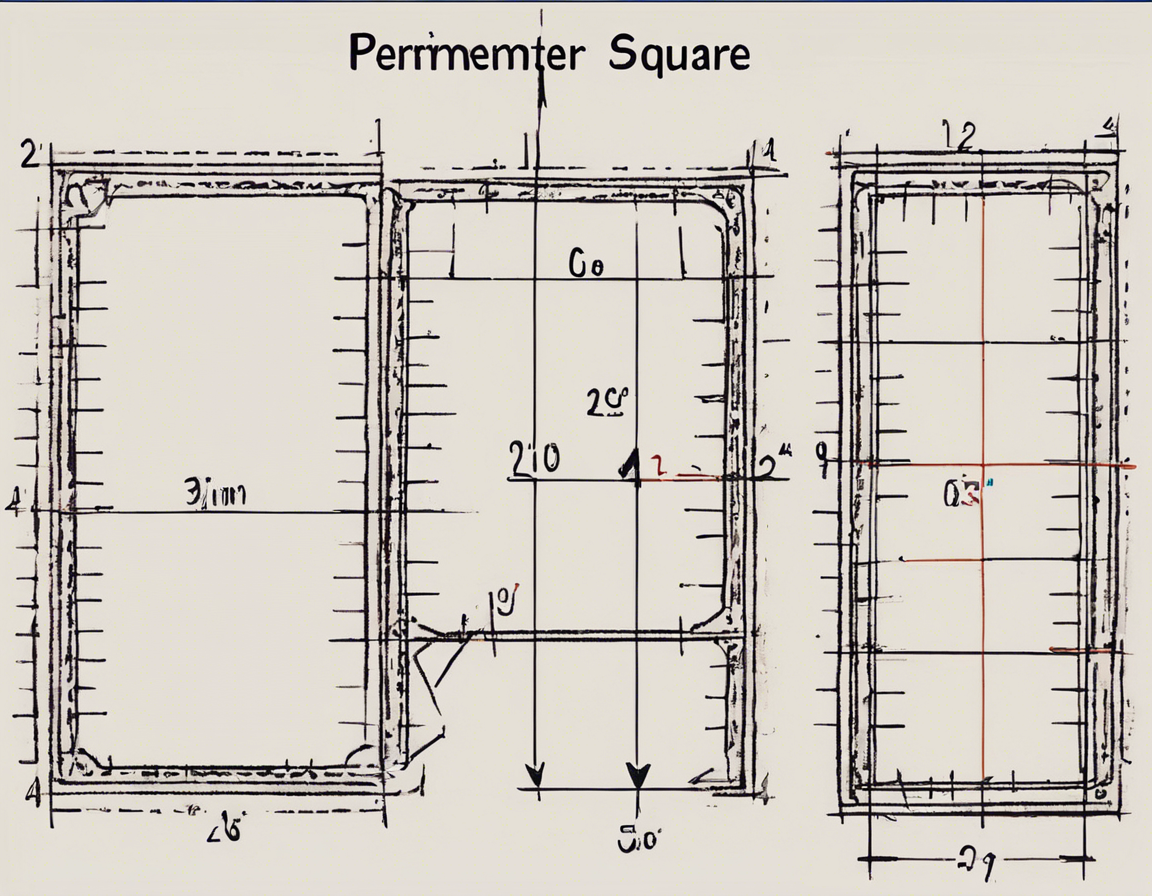A square is a fundamental geometric shape with four equal sides and four right angles. One of the basic calculations involved with squares is finding their perimeter, which is the total distance around the outside of the shape. Calculating the perimeter of a square is relatively simple, as it involves adding up the lengths of all four sides. This article will provide a step-by-step guide on how to calculate the perimeter of a square, along with examples to help you understand the concept better.
Understanding the Perimeter of a Square
Before diving into the calculations, it’s essential to have a clear understanding of what perimeter actually means in the context of a square. The perimeter of any shape is the total length of its boundary. For a square, since all four sides are equal in length, you can calculate the perimeter by adding up the lengths of all four sides.
Formula for Perimeter of a Square
The formula to calculate the perimeter of a square is straightforward:
Perimeter of a square = 4 × side length
Where the side length refers to the length of any one side of the square. Since all four sides of a square are equal, you only need to know the length of one side to find the perimeter.
Step-by-Step Guide to Calculate the Perimeter of a Square
Now, let’s break down the process of calculating the perimeter of a square into simple steps:
-
Determine the Side Length: Measure the length of any one side of the square. Let’s say the side length is denoted by s.
-
Apply the Formula: Plug the value of the side length s into the formula: Perimeter = 4s.
-
Calculate the Perimeter: Multiply the side length by 4 to find the perimeter of the square.
Example Calculation
Let’s consider an example to illustrate the calculation:
If the side length of a square is 5 units, then:
Perimeter = 4 × 5
Perimeter = 20 units
So, the perimeter of the square in this case would be 20 units.
Importance of Perimeter in Real Life
Understanding how to calculate the perimeter of a square (or any shape) is not just about solving math problems. In real life, perimeter calculations are crucial in various scenarios, such as:
-
Fencing: When planning to enclose a square-shaped garden or any land with a fence, you need to know the perimeter to determine the amount of fencing material required.
-
Construction: Architects and builders use perimeter calculations to measure the total length of walls in a structure, helping them estimate materials needed for construction.
-
Art and Design: Artists and designers often work with geometric shapes, including squares, where knowledge of perimeter calculation comes in handy for creating aesthetically pleasing designs.
Tips for Calculating the Perimeter of a Square
To ensure accuracy and efficiency in calculating the perimeter of a square, consider the following tips:
-
Measure accurately: Always double-check the side length measurement to avoid errors in the final perimeter calculation.
-
Use the formula: Remember the simple formula Perimeter = 4s and apply it systematically for quick results.
-
Units matter: Pay attention to the unit of measurement (e.g., inches, centimeters, meters) and ensure consistency in units throughout the calculation.
Frequently Asked Questions (FAQs)
- What is the perimeter of a square with a side length of 8 cm?
-
The perimeter of a square with a side length of 8 cm would be 32 cm.
-
Can the perimeter of a square be a decimal or fraction?
-
Yes, the perimeter of a square can be a decimal or fraction, depending on the side length provided.
-
If the perimeter of a square is given, how can I find the side length?
-
To find the side length of a square when the perimeter is given, divide the perimeter by 4.
-
What if the lengths of all four sides of a figure are not equal?
-
If the lengths of all four sides are not equal, the shape is not a square, and the perimeter calculation would differ.
-
Can the diagonal of a square help in finding the perimeter?
- The diagonal of a square does not directly help in finding the perimeter, as it is not directly related to the lengths of the sides.
Conclusion
Calculating the perimeter of a square is a fundamental mathematical concept that finds applications in various real-life scenarios. By understanding the formula and following the step-by-step guide provided in this article, you can easily determine the perimeter of a square with confidence. Remember, practice makes perfect, so try out different examples to reinforce your understanding of square perimeters.
